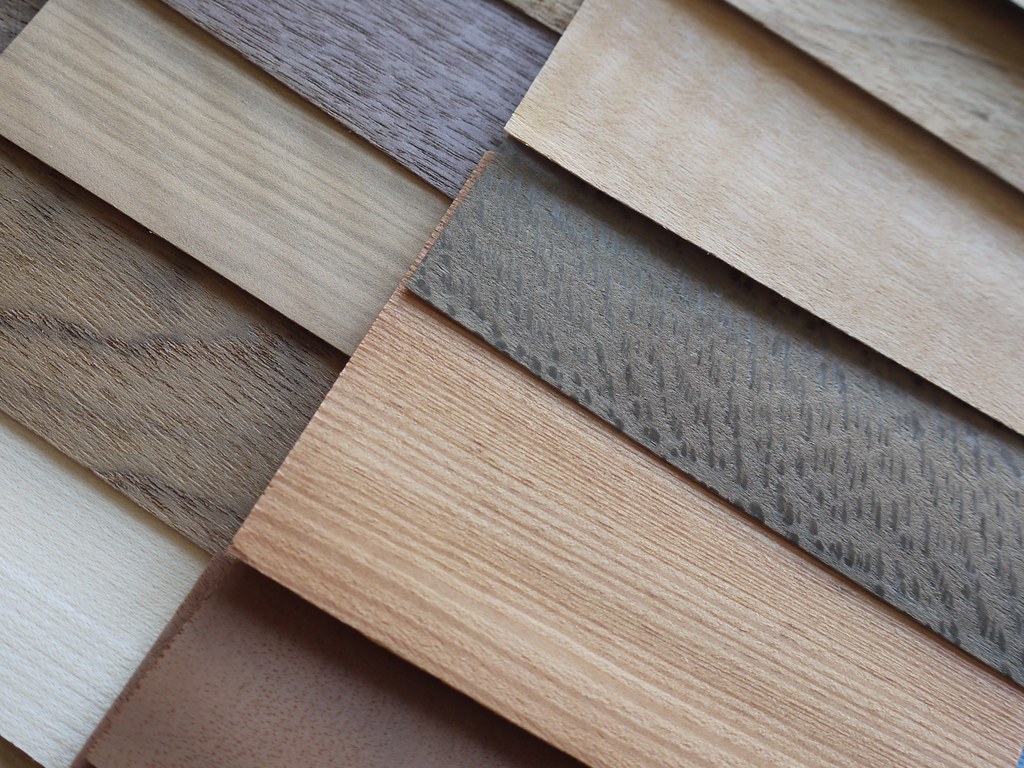If you’ve ever wondered about the intricate process behind the production of wood veneer, you’ll find it fascinating how a single log can be transformed into a delicate yet durable layer that enhances various surfaces.
The initial steps involve meticulous selection and precise slicing techniques, but what comes next is where the real magic happens.
Know the important stages that turn raw wood into the elegant, versatile material that graces your everyday surroundings.
Selection of Wood Logs
When preparing to make veneer, the initial important step involves meticulously selecting high-quality wood logs based on specific species and characteristics to guarantee top production results.
The selection process is vital as different wood species offer varying qualities of veneer, affecting the final product’s appearance and durability.
These logs are stored under controlled humidity conditions to maintain their integrity and prevent any deterioration that could compromise the veneer’s quality.
To prepare the logs for slicing into veneer sheets, water spraying or soaking in ponds is conducted to soften the wood and make it more pliable for cutting.
The soaking duration can range from 18 to 72 hours, depending on the wood species and the desired quality of the veneer. After soaking, the logs are identified and cut into halves or quarters, known as peeler blocks or billets.
This precise cutting process is essential to ensure uniformity and consistency in the veneer slices that will be produced from these blocks.
Proper selection and preparation of the wood logs lay the foundation for a successful veneer production process.
Softening Process
Softening wood for veneer production involves increasing the moisture content considerably through steam and soaking processes to prevent tearing during the slicing stage.
Achieving a high moisture content is important to make sure that the wood fibers are pliable enough for slicing without damage.
After the wood is softened, logs are cut to the required size, readying them for the slicing process.
Softening the wood is a critical step in veneer production as it enables the wood to be sliced into thin, accurate sheets without tearing or breaking.
Steam and soaking are the primary methods used to soften the wood effectively.
These processes help to relax the wood fibers, making them more flexible and less prone to tearing during the slicing process.
By softening the wood before slicing, the veneer sheets can be produced with precision and consistency, ensuring high-quality end products.
Softening the wood is important for the overall success of the veneer production process.
Peeling of Wood
How is wood peeled for veneer production?
When it comes to creating veneer sheets, one common method utilized is the rotary cutting technique.
In this process, a log is mounted on a lathe and rotated against a blade, which peels off thin continuous sheets of wood.
The blade cuts through the log’s growth rings, creating varied grain patterns on the resulting veneers. This method is highly important and allows for the production of large sheets of veneer with minimal waste.
Rotary cutting is favored in veneer production for its ability to maximize the usable wood from each log. By continuously slicing the log, it enables the creation of sheets with different grain patterns suitable for various applications.
The sheets produced through rotary cutting can showcase a mix of grain patterns, enhancing the aesthetic options available for woodworking projects.
Drying of Veneer
During the veneer production process, sliced veneers undergo thorough drying in large dryers to guarantee uniform and flat drying, important for maintaining the quality and integrity of the wood veneer.
The drying process is a critical step as it helps prevent warping or cracking in the veneer sheets, ensuring their quality. Proper drying also contributes to maintaining the flatness of the veneer sheets, which is essential for successful application to substrates.
By carefully controlling the drying conditions, manufacturers can achieve even drying across all veneer sheets, further enhancing their integrity.
Once dried, the veneer sheets are meticulously stacked to preserve their flatness before proceeding to the next stage of the production process.
This meticulous attention to detail during the drying phase plays a significant role in producing high-quality wood veneer products that meet the desired standards for various applications.
Cutting, Clipping, and Gluing
After the veneer sheets have been thoroughly dried to guarantee uniformity and flatness, the next step in the production process involves cutting, clipping, and gluing the veneer bundles for further processing.
Veneer bundles are clipped to the required length before being trimmed into consistent widths to prepare them for gluing.
Using a specialized gluing machine, the veneer sheets are bonded edge-to-edge to promote strength and durability. Once glued, these veneer sheets are now ready for application onto substrates such as plywood or MDF.
The precision in cutting, clipping, and gluing is essential in crafting various wood veneer products like panels, doors, and furniture.
By following these meticulous steps, manufacturers can create high-quality veneer products that meet the desired specifications and standards for different applications in the woodworking industry.


Leave a Reply